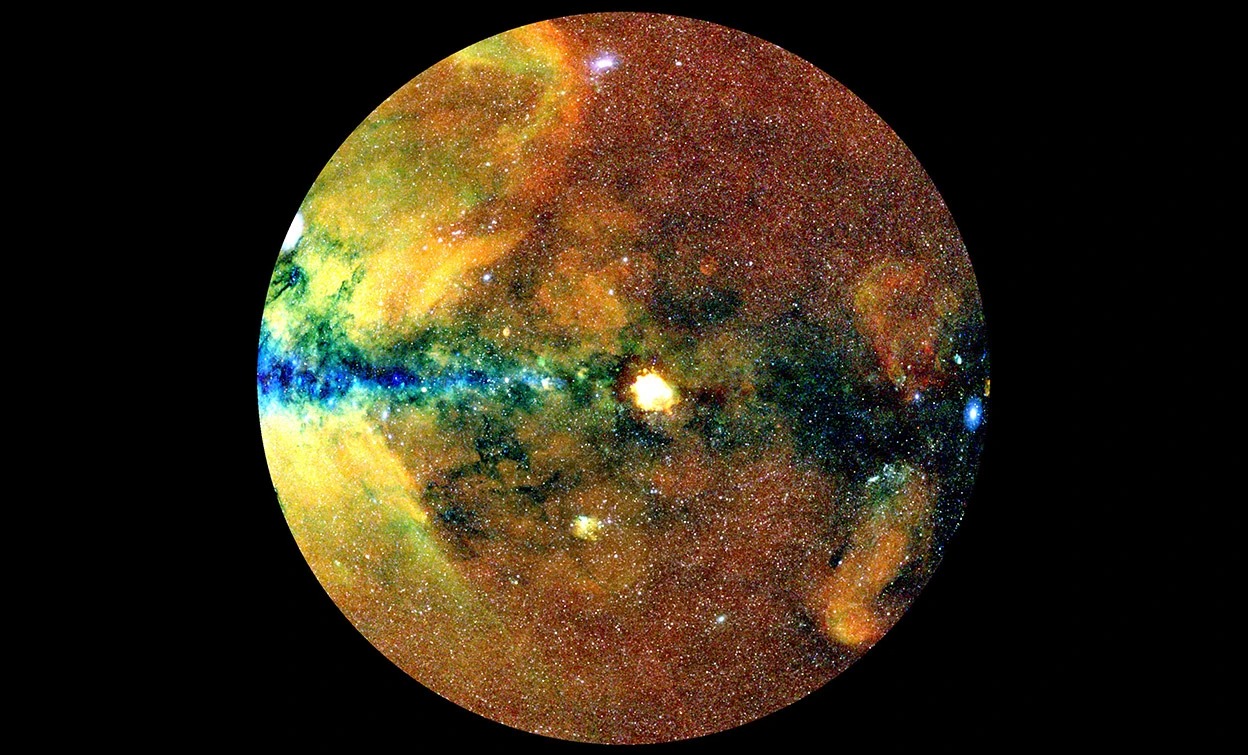
Key Takeaways:
Cosmologists have long been on the hunt for dark matter, which makes up 80 percent of the mass in the universe, and yet is still mysterious. As its name suggests, dark matter doesn’t emit light, absorb light, or interact with normal matter at all. We can only detect the presence of dark matter through its gravitational effects on normal, baryonic matter. For example, stars and gas clouds orbit the centers of galaxies far too quickly to be accounted for by only the visible matter, and galaxies move around inside of clusters far too quickly. Unseen matter must be helping these orbits, an effect first noticed in the 1930s.
Indeed, the largest structures in the universe can only have evolved to their present state aided by the presence of dark matter. If they were made of only normal, visible matter, then these structures, like the clusters of galaxies that are home to a thousand galaxies or more, simply would not have had enough time to reach their present sizes.
So by studying these large structures, astronomers can hope to find a clue as to how dark matter behaves. From there, they can test various ideas about the nature of dark matter and compare these ideas with observations from the cosmos.
But because clusters of galaxies are so large, they are relatively rare. For example, the nearest galaxy cluster to us is the Virgo cluster, the core of which is 54 million light-years away. If we want to really study how dark matter can influence the birth and evolution of galaxy clusters, we need a survey that can capture lots of them.
Thankfully, galaxy clusters contain more than just galaxies and dark matter. Filling the volume of each cluster is a hot, thin gas. This gas has such a low density that it would register as a vacuum in earthbound laboratories, but is so hot that it emits X-ray radiation. This makes galaxy clusters glow brightly at those wavelengths as one of the brightest sources of X-rays on the sky.
In 2019 German and Russian research groups collaborated to launch a new X-ray satellite, the Spektr-RG mission. Onboard this mission was eROSITA, an X-ray telescope designed to scan the entire sky and provide detailed, high-resolution data. Due to the breakdown of relations between Germany and Russia following the latter country’s invasion of Ukraine, the instrument stopped collecting data in 2022.
Recently the European Space Agency announced the release of its first batch of all-sky results, constituting data captured before 2022. The data are publicly available, and have already been used to strengthen our understanding of dark matter.
All told, the eROSITA instrument mapped 5,259 galaxy clusters across roughly one-third of the entire sky. The number of clusters in the universe and the distribution of their sizes is closely connected to the amount of dark matter. More dark matter in the early cosmos will cause galaxy clusters to form earlier and become larger, while less dark matter will produce smaller clusters. The results from the all-sky survey confirm that dark matter plays a critical role in shaping these gigantic structures.
Additionally, the new all-sky image provided enough detailed information about galaxy clusters to be able to use them as a precise measurement of the total amount of matter in the universe: 29 percent of the entire mass-energy of the cosmos comes in the form of matter (dark matter making up most of that), with the remainder in the form of dark energy. These results agree well with the established ratios from cosmological satellites like Planck.
The new all-sky survey isn’t just about galaxy clusters. It also provides a wealth of information about many high-energy events in the cosmos, like pulsars, neutron stars, black holes, and supernovae. The team will follow up with more data captured from the rest of the sky.









